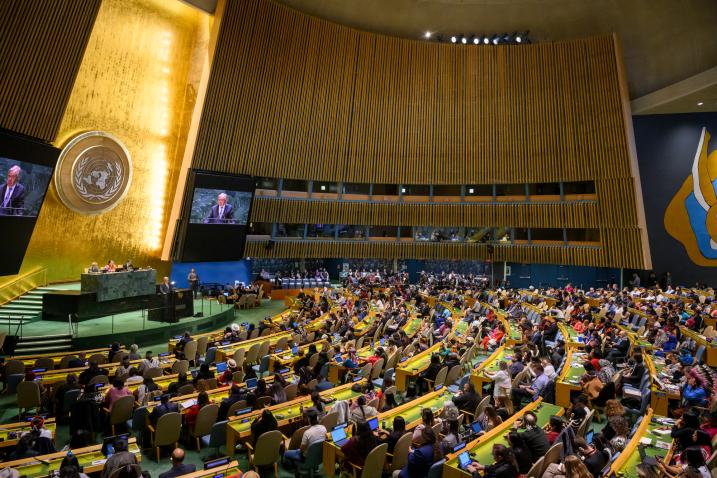In this feature, UN News honours the work of activists helping to protect women’s rights, which once again, came under attack in many countries throughout 2022.
Women living under Taliban rule in Afghanistan
August marked one year since the Taliban seized control once more, of Afghanistan, sparking widespread fears for women’s rights there, which were severely eroded during the regime’s previous time in power during the late 1990s.
Twelve months on, UN Women announced that the agency was committed to continue the struggle for women’s rights in Afghanistan, the only country in the world where girls are banned from going to high school, and effectively barred from political participation.
We marked the anniversary of Taliban rule by telling the stories of some of the women who have decided to stay in the country, even though their lives have been turned upside down.
They include Zarina*, formerly one of Afghanistan’s youngest entrepreneurs, who was forced to close her formerly thriving bakery, amid growing restrictions on women-owned businesses; Nasima*, a peacebuilder and women’s rights activists, who was forced to shut down most of her projects, but later managed to restart some initiatives; and Mahbouba Seraj, a veteran rights defender, who vowed to stay on and bear witness to what is unfolding in her country.
Ms. Seraj had a sobering message for those who think that Afghanistan is an exceptional case: “what is happening to the women of Afghanistan can happen anywhere, she said.
“Roe v. Wade [the case that led to the national right to abortion in the US, which was struck down by the Supreme Court in 2022] destroyed years of progress, taking away the rights of women over their own bodies. Women’s rights being taken away from them is happening everywhere and if we are not careful, it will happen to all the women of the world.”
*Names changed to protect identities
Mahsa Amini: the inspiration for widespread Iranian protests
In November, The UN human rights office, OHCHR, condemned the response of the Iranian regime to protestors demonstrating against the government, in the wake of the death of Mahsa Amini, a young woman who died in police custody in September, after being detained for wearing her hijab incorrectly, according to the so-called morality police.
Her death led to demonstrations in many Iranian cities, including protest by high-school age girls. The Iranian government responded by arresting thousands of protestors, including women, children, youth, and journalists.
On 22 November, OHCHR stated that, in just one week, more than 40 people had been killed in protests, including two teenagers, and two days later, the Human Rights Council created a fact-finding mission in relation to the demonstrations.
“It pains me to see what is happening in the country,” UN Human Rights Commissioner Volker Türk told those attending the session which voted in favour of the mission.
“The images of children killed. Of women beaten in the streets. Of people sentenced to death”.
The growing international condemnation of the Iranian crackdown was reflected in the decision by members of the UN Economic and Social Council to remove Iran from the Commission on the Status of Women on 14 December.
The United States introduced the resolution, which received 29 votes in favour and eight against, with 16 countries abstaining.




